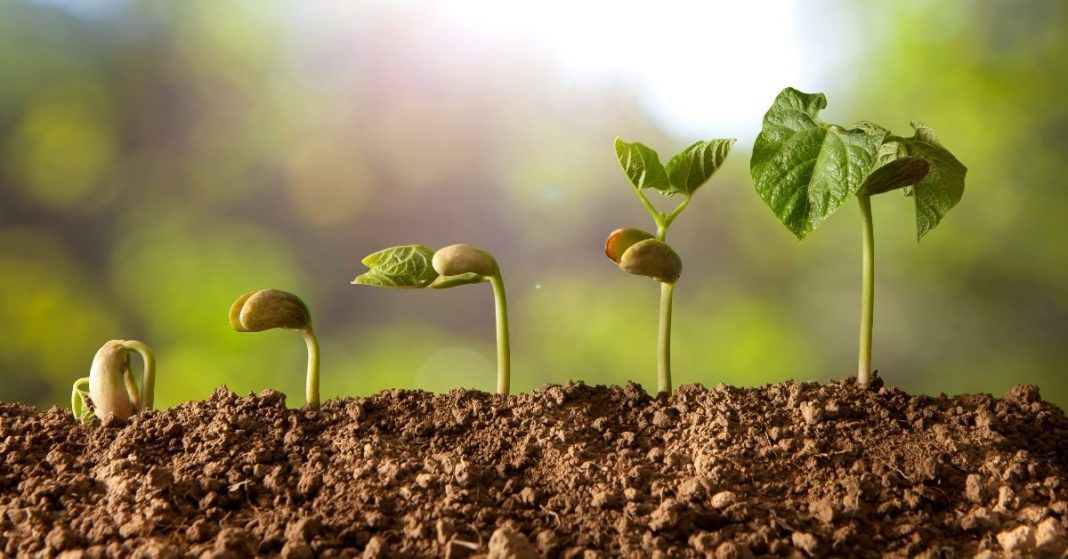#.How to Grow Plants From Seeds? A Complete Guide for Beginner.
How to Grow Plants From Seeds?
Seeds from plants are not only simple, but they are also among the most affordable methods to provide your garden with an abundant supply. Many people imagine cultivating vegetables from seeds, but flowers are equally simple to grow. In addition, you’ll have a greater selection of colors and varieties when you decide to grow your own varieties from seeds, rather than purchasing the ones that are already being grown and sold at nurseries around the beginning of the season. Perennial flowers might not bloom in their first year, but if you’re patient enough to wait, you’ll grow your garden for less than the cost of purchasing mature plants. The annual flowers will bloom simultaneously, and many of them will even start to seed their own seeds, meaning you’ll only need to place them in your garden once to get years of stunning flowers.
Growing annual flowers from seed

The annual flower is the mainstay of cottage gardens that are billowy. Many annuals see things in their own way as they leave their flower heads on the plant towards the time of the year’s end. They’ll eventually drop seeds, and the seeds will spread across the garden with the assistance of the breeze. It is possible to find yourself with more than one seedling in one place. However, they should be simple to remove or move.
Be aware that annual flowers expand quickly, which means that even those you direct sow in spring will bloom simultaneously as they usually do or shortly following that. Most self-sow annuals make good options for starting with seeds indoors or directly sowing.
Growing Perennial Flowers Starting From Seed

The majority of perennials don’t bloom until the second year of their lives and spend their first year developing a robust root system and plenty of leaves to allow photosynthesis. It is possible to avoid this waiting time by planting the seeds of your perennial plants in autumn and tricking the plants into thinking that the next spring is “year two,” but typically, you’ll need to wait for the right time.
Once your perennials have been established, they’ll start to bloom and get bigger each year. Within a short time, you’ll have the ability to grow more plants by splitting those you already have.
How to Grow Plants From Seeds follow these Step.
- Select a container.
- Start with high-quality soil.
- Plant it at the appropriate depth.
- Be careful with your water.
- Keep a consistent moisture level.
- Keep the soil warm.
- Fertilize
- Make sure seedlings get enough sunlight.
- The air should be circulated.
- Harden off seedlings before transplanting them outdoors.
Here are the essentials in just 10 steps.
1. Select a container.
Containers for seed-starting are clean, measure at least 2 inches in depth, and feature drainage holes. They could be made of plastic cells, peat pots, flats made of plastic yogurt cups, or even eggshells. So long as they’re clean (soak in 9 parts of water to 1 part bleach from your household over 10 minutes). There are also seed-starting kits, but don’t spend a lot of money until you’re sure that you’ll start seedlings every year. If you begin seeds in tiny flats or containers made of plastic, you’ll have to move them into pots that are slightly larger after they’ve developed their first true leaves. Remember that pots and flats take up space, so be sure that you have enough sun space for the seedlings that you start.
2.Start with high-quality soil.
Sow seeds using sterile seed-starting soil or potting mix that is available at nurseries and garden centers. Do not use garden soil as it’s too heavy and has seeds of weeds that could contain disease organisms. Make sure to soak the soil in warm water before filling the seed-starting containers.
3. Plant it at the appropriate depth.
The correct plant depth is in the packet. The most common guideline is to cover the seeds with soil that is equal to or three times the thickness, but make sure to follow the instructions on how to plant seeds carefully. Certain seeds, such as snapdragons and lettuce, require light to germinate. These seeds should be placed on the soil’s surface; however, they should contact the moist soil. A gentle tamping of the soil after sowing can aid. After sowing your seeds, use a spray bottle to soak the soil once more.
4. Be careful with your water.
Always use water at room temperature. The chlorinated water should be left to rest overnight to allow the chlorine to dissipate, or you can use water that has been distilled. Avoid softened water. It is essential to keep the soil moist, but be careful not to overwater, as this causes diseases that could endanger seeds. Be careful not to splash water onto leaves. A simple way to prevent this and overwatering is to submerge the bases of your containers into the water and let your soil’s surface soak up water from the bottom until it becomes moist. Certain seed-starting kits come with a wicking mat, which conducts water from a reservoir into dry soil. This is perhaps the most foolproof method of watering seedlings, but you must be cautious to ensure that the soil isn’t left too moist. Don’t delay watering or let the seeds or seedlings dry out no matter what you do. It’s an indictment on your life.
5. Keep a consistent moisture level.
Before the seeds germinate, cover the container to keep the moisture within. Seed-starting kits usually come with a plastic cover. It is also possible to use a plastic bag, but it needs to be supported to ensure it does not lie in a flat position on the soil. The covers should be removed at the moment seeds begin to appear. After seedlings begin to grow, decrease watering until the soil dries out. However, do not let them die.
6.Keep the soil warm.
The seeds require warm soil for germination. They grow slower or never at all in soils that are too cold. Most seeds germinate at about 78 degrees Fahrenheit. Waterproof heating mats, made specifically for germinating seeds, ensure that soil remains at an even temperature. They are available at many garden centers and nurseries. You can also put seed trays on the top of refrigerators or other warm appliances until the seeds begin to appear. Following germination, the air temperature should be at or lower than 70 degrees. Seedlings can tolerate temperatures as low as 50 degrees Fahrenheit as long as the soil temperature is between 65 and 70 degrees.
7. Fertilize
Feed your seedlings as soon as they’ve developed their second set of leaves by applying a half-strength liquid fertilizer every week. Apply it with care so that seeds don’t get sucked out of the soil. Following four weeks of growth, add full-strength fertilizer in the form of liquid every week until the plant is transplanted.
8. Make sure seedlings get enough sunlight.
Insufficient light can result in the seedlings being droopy and tall, which will struggle when moved outdoors. Growing tall seedlings inside a sunny south-facing window are possible in areas with mild winters. Further north, windows, even those that face south, might not be able to provide sufficient light, particularly in winter’s middle. Seedlings should have 14–16 hours of direct sunlight each day for the best growth. If your seedlings begin to lean towards the window, it’s an obvious sign that they’re not receiving enough sunlight. Just turning the pots will not suffice. You may require artificial lighting. Nurseries and mail-order catalogs for seeds may offer lighting kits. Be sure to follow the instructions carefully.
9. The air should be circulated.
Air circulation can prevent disease and promote the growth of strong stems. A gentle fan is placed near the seedlings to generate air movement. Keep the fan away from the seeds to prevent blasting them directly.
10. Harden off seedlings before transplanting them outdoors.
Before they can be moved outdoors, adjusting to their harsher, new environment is necessary. This is known as “hardening off.”

